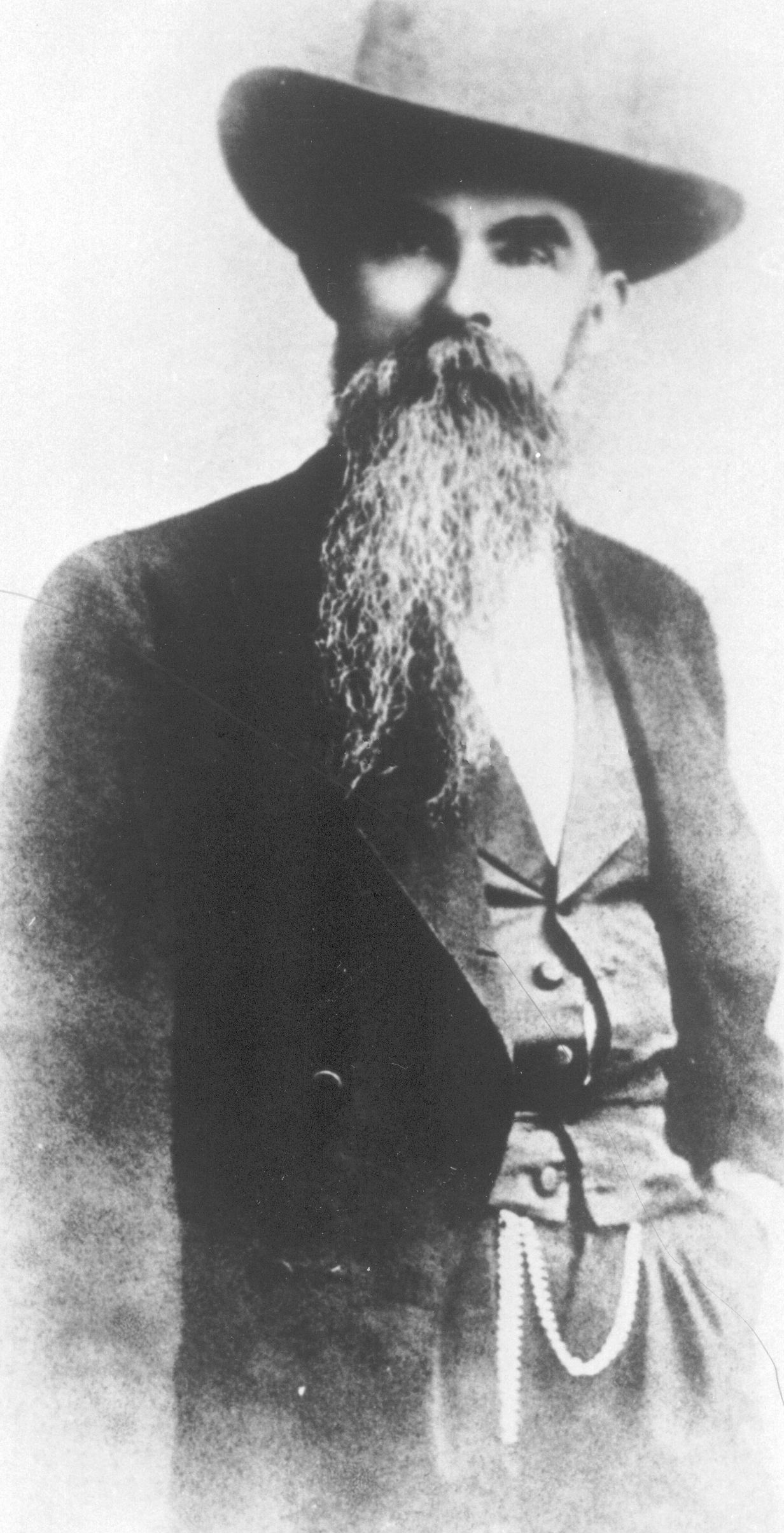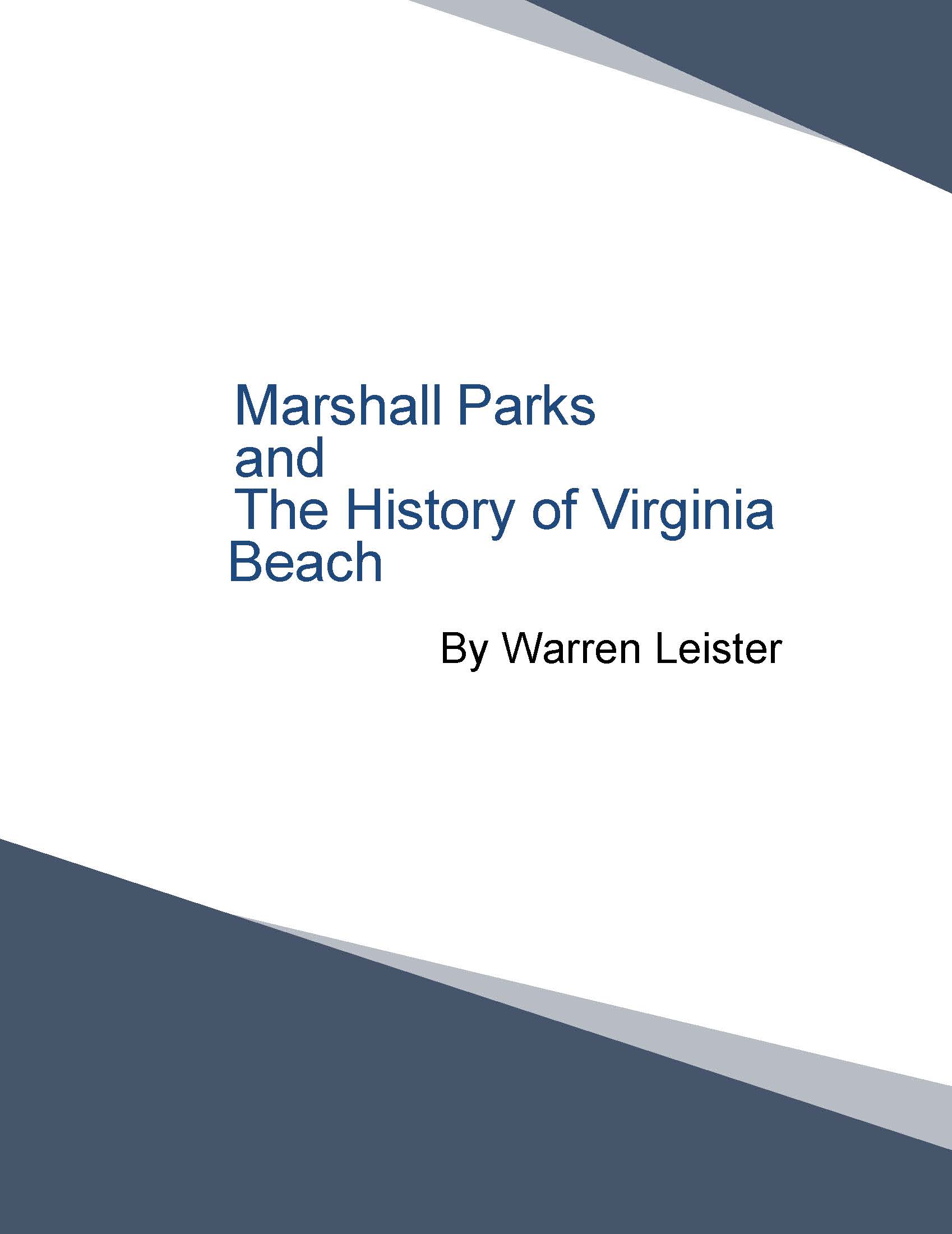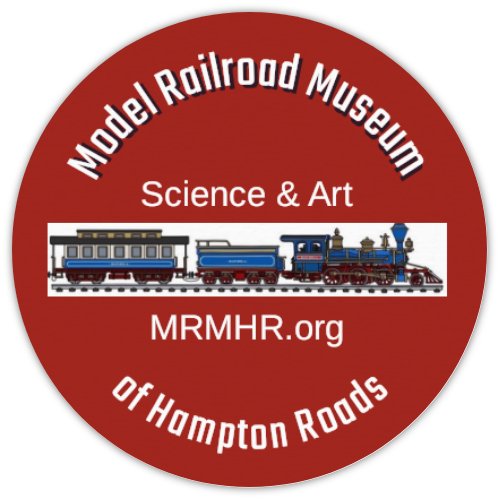Come Together
Get Ready for Family Fun,
Education, and Entertainment!!
| search engine by freefind | advanced | ||
Making Tracks
February 2024
Birth of Virginia Beach
Part 7 in a Series by Warren Leister, Historian
 William Mahone
William Mahone{Marshall Parks Jr., in his own words, continues a political speech carried over from the previous Part 6 of this continuing story about the founder of Virginia Beach, see Part 6 for more details}:
“The road had been consolidated, and whatever others may think I am glad of it. I trust that General Mahone {William Mahone, who at this time was President of the Atlantic, Mississippi & Ohio Railroad (AM&O)} may be able to push the road ahead until it reaches the shores of the Pacific. Should I and my colleague be elected, he will find no two persons more willing to aid him in this great work.” {end of Marshall Jr’s speech}
William Mahone (1826–1895) was born at Brown's Ferry a historic Federal style brick house built in 1815 near Courtland, Va. He graduated from a fairly newly established Virginia Military Institute (VMI) with a degree in civil engineering in 1847. After some earlier work on a railroad and a plank road, which was a turnpike made of wood planks, Mahone was hired on April 12, 1853 to be chief engineer building the new Norfolk and Petersburg Railroad. Mahone's innovative 12-mile-long roadbed through the Great Dismal Swamp between South Norfolk, which is now the city of Chesapeake and Suffolk, employed a log foundation laid at right angles beneath the surface of the swamp. Still in use over 165 years later, Mahone's corduroy design withstands the immense tonnage of modern coal trains to this day. He was also responsible for engineering and building the famous 52-mile-long tangent track between Suffolk and Petersburg. Straight as an arrow with no turns or curves, it is still a major modern Norfolk Southern rail traffic artery.
In 1854, Mahone surveyed and laid out with streets and lots the new resort town of Ocean View City, fronting on the Chesapeake Bay in Norfolk County. With the advent of electric streetcars in the late 19th century, an amusement park was developed there, and a boardwalk was built along the adjacent beach area. Most of Mahone's street plan is still in use in the 21st century as Ocean View, now a section of the City of Norfolk is redeveloped. Mahone was also a surveyor for the Norfolk and South Air Line Railroad on the Eastern Shore of Virginia. After the Civil War, Mahone went right back to railroading and became the driving force in the linkage of Norfolk & Petersburg, South Side Railroad, and the Virginia & Tennessee Railroad. He was president of all three by the end of 1867. Due to his personal holdings involving railroads and real estate investments in coal fields, he died in 1895 as one of Virginia’s wealthiest citizens of all time.
Meanwhile in 1870 after the Civil War, where he served as a general in the Confederate States Army and for which he became known as General Mahone, Mahone decided to re-organize the three railroads and merge them into one to form the Atlantic, Mississippi and Ohio Railroad (AM&O). The AM&O extended 408 miles (657 km) from Norfolk to Bristol, Virginia. The Mahones moved to the headquarters city of Lynchburg, the midpoint of the AM&O. The acronym AM&O was said to stand for "All Mine and Otelia's." Mahone married Otelia Butler (1835–1911) on February 8, 1855. She was from Smithfield in Isle of Wight County, Virginia and the daughter of the late Dr. Robert Butler from Smithfield, who had been State Treasurer of the Commonwealth of Virginia from 1846 until he died in 1853.
Going back to the completion of the Norfolk and Petersburg railroad in 1858, a popular legend at the time was that Otelia and her husband William Mahone while traveling along the just completed railroad naming stations along the 52-mile (84 km) tangent between Suffolk and Petersburg from Ivanhoe, a book she was reading by Walter Scott. From Scott's historical Scottish novels, Otelia chose the place names of Windsor, Waverly and Wakefield. She tapped the Scottish Clan "McIvor" for the name of Ivor, a small Southampton County town. When they could not agree on a name for a station just west of the Sussex County line in Prince George, it is said that the young couple invented a new word in honor of their "dispute", which is how the tiny community of Disputanta was named.
A newspaper account from the Richmond Dispatch dated March 3, 1857 titled "Norfolk and Petersburg Railroad," "The arrival of the third cargo of iron for the Norfolk and Petersburg Railroad, noticed yesterday, makes 2,000 tons of iron received at Norfolk for that road. The laying of the rails will commence this month, at both Norfolk and Suffolk, and proceed both ways until the portion of the line between Wood's point (Norfolk) and Suffolk shall be laid. This will enable locomotives to run as far as Suffolk with supplies of material from this port, and the laying party can thence work on towards Petersburg. The Norfolk Herald, of Saturday, says:”
“The work of bridging the Eastern Branch is now well under way, and will be prosecuted with vigor, while that of laying the rails is as rapidly progressing above a large coffer dam, constructed on Bramble's Point, was launched a few days ago, and floated over to the opposite shore, where it has been placed on the piling, and the work of building the stone piers will be proceeded with, according to the plan of the engineer without delay, all things being prepared for that purpose. In the mean time, laborers are constantly at work filling up and extending the terra firma across the head of Newton's Creek, from Bramble's Point to the Eastern terminus of Water street. The material for filling up the creek is abundantly furnished by the point which makes out from Bramble's shore and which belongs to the Company."
From Norfolk Day Book Dated October 5, 1857 titled "Cars on the Track!," "Two of the four locomotives for the Norfolk and Petersburg Railroad have arrived, and one of them, with her tender, is already upon the track. This locomotive—No. 1, of the line— weighs 44,000 pounds in running order, and cost $8,250. She will commence running in about a week. These locomotives are from the manufactory of Richard Norris & Son, in Philadelphia, and are constructed in the best manner. The freight cars already on the track, eight or nine in number, were built at the Union Car Works in Portsmouth. After a little additional work to be done upon the draw of the Bridge on the Southern Branch, which will hardly require longer than a few days, the Norfolk & Petersburg Railroad will be ready for the tramp of the famous 'iron horse.' In the course of a fortnight, we think we can safely say, the line will be in the 'full tide of successful operation,' from the Petersburg terminus to Wood's Point, on the Eastern Branch of the Elizabeth River, to and from which latter place passengers and freight will, for the present, be convoyed by ferry boats."
From the Richmond, Va. Daily State-Journal dated March, 21, 1872 stated that the following House bill this day communicated from the House of Delegates were passed … to incorporate the Norfolk and Sewell’s Point railroad company. {this railroad was never built to Sewell’s Point, but later this charter will be repurposed to build a most important railroad line, stay tuned to find out more!}
This concludes “Birth of Virginia Beach Part 7” the next installment, Part 8, will be published in March, 2024.
Thank you for reading our newsletter, Making Tracks, and for your interest in the development of the historical Model Railroad Museum to be established here in Hampton Roads in the near future. Please consider a donation or sponsorship of this future attraction to help us acquire a proper location.
Get Updates and Special Offers in
the MRMHR Newsletter:
Making Tracks
Sign Up Here...
The official newsletter for the Model Railroad Museum of Hampton Roads

Share this site on your favorite Social Media page!
Recent Articles
-
Making-Tracks-December-2025
Dec 14, 25 06:23 AM
The official newsletter for the Model Railroad Museum of Hampton Roads -
Making-Tracks-November-2025
Dec 12, 25 12:15 PM
The official newsletter of the Model Railroad Museum of Hampton Roads -
A STEM Educational Center
Nov 09, 25 07:20 PM
Being a STEM Educational Center is a major part of our mission.
The Birth of Virginia Beach

We have created and published a new historical document on the Birth of Virginia Beach. This has been written by our historian Warren Leister after researching the era and the people involved for several years. Excepts have been published here in our newsletter previously, but the information is now available all together in a 99 page document that you can purchase in our store. It factually explores the events, the dedicated people and the interesting culture in which they lived. Pick up your copy today!
The Model Railroad Museum of Hampton Roads is a fantastic community center based on running, operating and even building your own model railroads! There's something for every age here.
Learn about the real history of this area and how important it was in the building of America. Watch how railroads were built, the people involved, where America's roots were formed.
As they build their own railroads, students will be learning about science, electronics, architecture, technology, engineering, mathematics, and the art of 3 dimensional model landscaping. They can earn rewards for completing projects and winning contests.
Try to solve yardmaster problems on a switching layout like getting the lumber from the forest to the furniture store, by way of the saw mill and the lumber yard.
Run your train around blockades and other trains to get to the station on time without speeding or crashing.
Play railroad monopoly using model railroads. Winner is the one who can collect the most cars into his yard within an hour.
There will be programs for autistic and special needs kids, disabled adults and veterans.
School tours. Holiday Shows. Library and video rooms. Even youngsters will have their own wooden models to enjoy. There are classes and hands-on clinics for adults. Learn how to get started in the hobby. Or just enjoy the fun.
Everybody loves trains and this will prove it! Just click on the either the blue DONATE button below to make it happen...
PayPal Giving Fund:
No Credit Card Fees
OR...
Charitable Donations through PayPal, Credit or Debit cards:
(Opt in or out of paying credit card fees)
Get Updates and Special Offers in
the MRMHR Newsletter:
Making Tracks
Sign Up Here...
The official newsletter for the Model Railroad Museum of Hampton Roads








